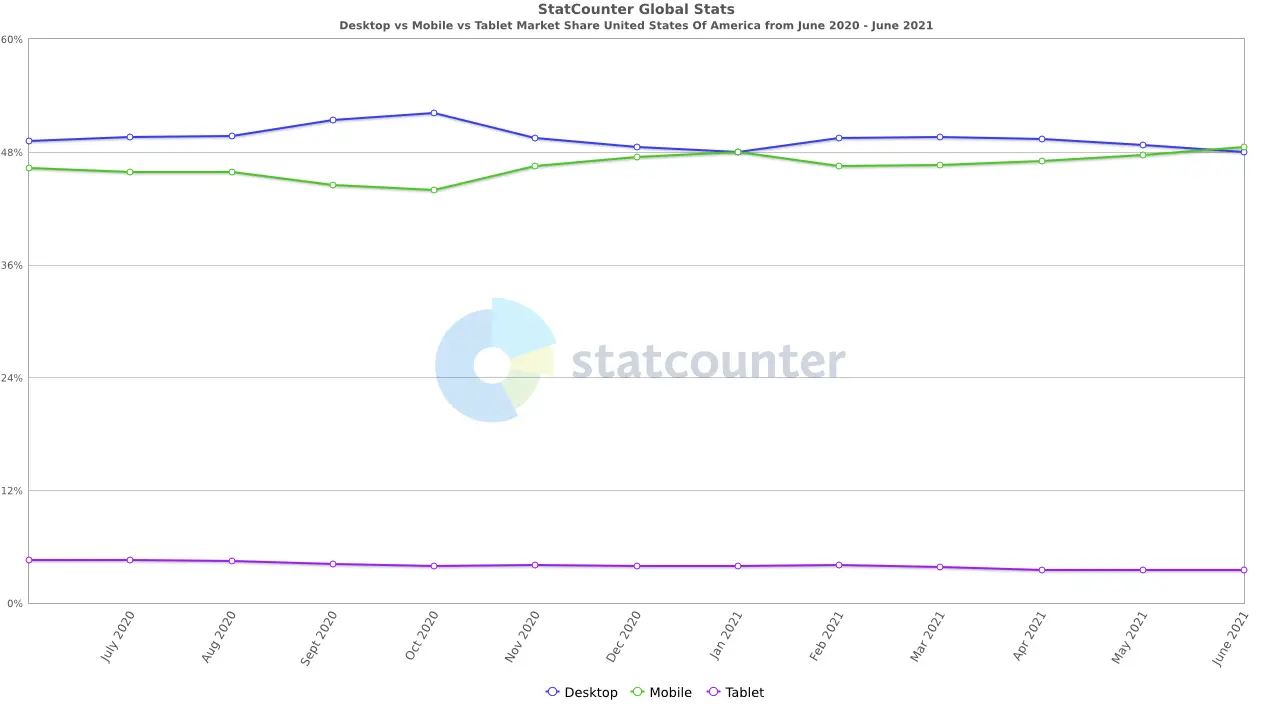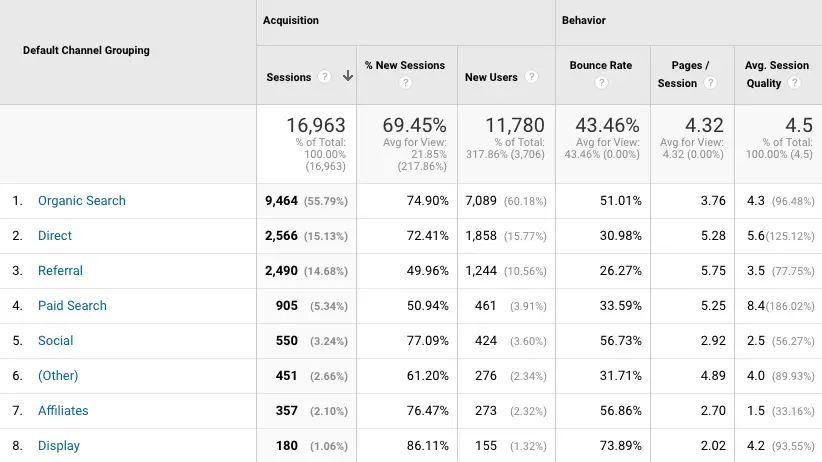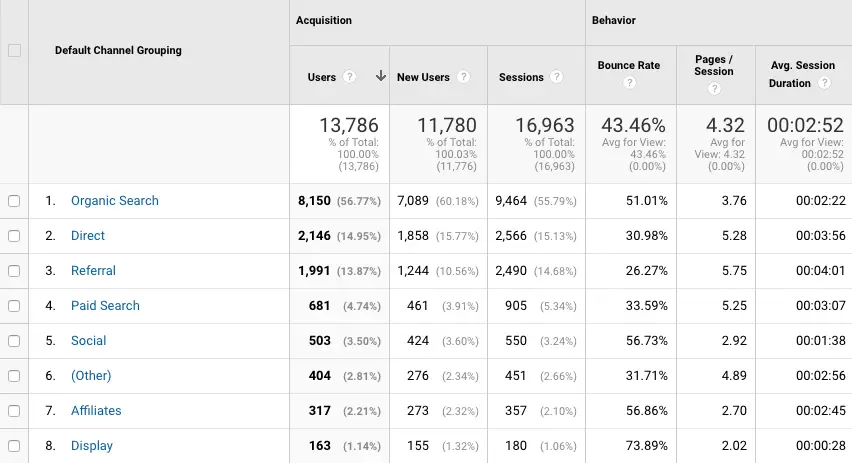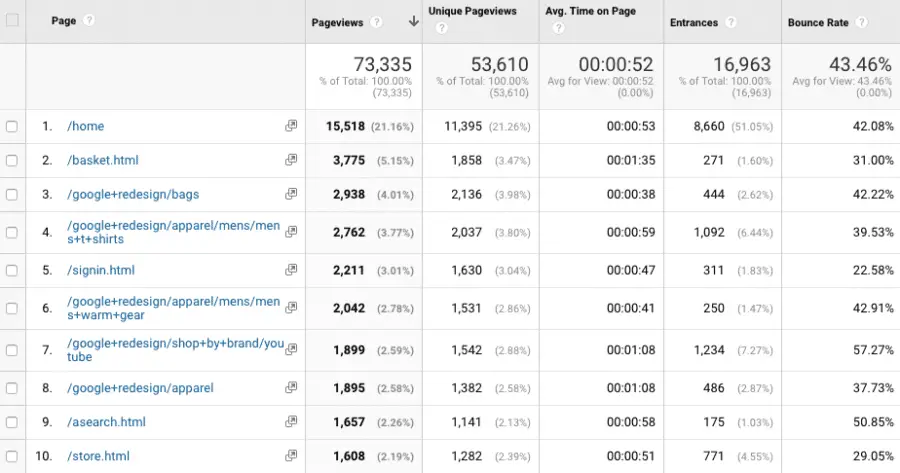Menu
Introduction To Web Traffic
> How To Increase Site Traffic
> Paid Website Traffic Sources
Introduction to Web Traffic
This is an introductory lesson on web traffic. By signing up for this course, you already understand that web traffic is the make or mar element of any online business. Even so, we will still take you through this introductory course to cover the basic things you should know about web traffic.
We advise you read through it even if you already know what web traffic is.
Web Traffic Definition
Website traffic is the number of people who visit a website. The number of people who visit a website largely depends on the website’s purpose, visitors’ goals, and how they found it.
Evolution Of Web Traffic
Each year brings new technology to the forefront. This holds true for how people access the Internet.
The desktop computer was the most popular way that people accessed the Internet in years past. Although desktop access remains very popular, it is not the primary device people use to access the web.
Mobile traffic has increased dramatically over the past decade. With smartphones and tablets becoming more popular, the number of people who use mobile devices to access the internet is on the rise.

It appears that at most 50% of all web traffic comes now from mobile devices. An iPad is more convenient than a desktop for many people.
Mobile traffic refers to visits from a mobile device, where desktop traffic refers to visits from a laptop or desktop computer.
Small business owners or larger businesses need to be able to adapt to ensure that your website displays properly on all devices.
Basic Important Web Traffic Metrics
1. Page Views:
This refers to the total number of views your website got. However, it doesn’t break down the channel the views came from. The page views metric is simply the totality of every visit to your website from anywhere at all.
2. Traffic Sources

These tell you where your traffic is coming from e.g. if it is coming from organic search, social, direct, referral, etc.
You can locate this in Google Analytics using the Path: Google Analytics > Acquisition > All traffic > Channels
This will give you deeper insight into which channel is driving the most traffic so that you know how to work on it. If the majority of your visitors come through organic search, it means you probably have a good SEO strategy. However, if there are fewer visitors from social media channels, your social media strategy might need to be improved.
3. New vs Returning Visitors
The New vs. The Returning Visitors report is a way to identify returning and new users on your site. This report is useful for understanding the potential number of people who might be returning to your site.
The report tracks the ClientID of each user who visits your site. It assigns a random number to the browser and device that the user uses when they visit your website. You can access the New vs Returning visitors metric in Google Analytics through the Path: Google Analytics > Audience> Behavior> New vs. Returning

This metric can be very useful. If you don’t get a lot of returning visitors, you will need to work on your content strategy. Good content is what brings people back. It is a good goal to have 25-50 percent of your visitors return.
4. Bounce Rate

The bounce rate refers to the percentage of visitors who leave your site within a short time after visiting it. These are the visitors who arrive at a site but then leave quickly.
Visitors who spend less time on your website and engage less with it have less chance of conversion. A high bounce rate is bad for SEO. So this is a metric to look out for in web analytics.
To access this metric in Google Analytics follow the path: Google Analytics > Audience > Behavior > Session Quality.
5. Average Time On Site

While the Bounce rate indicates areas where you are failing to engage visitors on your site, the Average Time On Site metric is a measure of how well you are engaging them throughout the site. It can identify problems such as poor navigation, poor content, or a lack thereof.
Keep in mind that mobile users behave differently to desktop visitors than on their smartphones. It is more common for them to spend longer browsing websites from their phones than from their desktops or laptops.
You can access this metric via Path: Google Analytics > Behavior> Site Content> All Pages
Types of Web Traffic
Understanding how visitors arrive at your site from different sources will help you to understand your website performance better. Here are the
1. Organic Traffic
This is the number of visitors who visit a website after performing a Google search or any other search engine and clicking on your post or page.
Getting this kind of traffic requires that you know SEO. And optimizing your site for SEO requires a significant investment in time and resources.
2. Direct Traffic
Direct traffic involves traffic from the following sources:
- People who have typed directly the URL of your site into their browser bars.
- People who have saved the URL of your website in their favorites and have accessed it.
- People who clicked on a link in an unindexed document or open email using email software.
3. Referral traffic
This is a type of web traffic that occurs when people visit a website through a link on another site (e.g. a blog, forum, etc.).
To increase referral traffic, you need to share your website links on other websites. You can do this through guest blogging and submitting your site to directories.
4. Social Traffic
This traffic source is the number of visitors who arrive at your website through a link on any social media site. And this can happen if you share your website on social networks or if your visitors share your posts on their own social channels. It is possible to distinguish the various social networks.
5. Email Traffic Campaigns
When you send an email to your subscribers, you can actually monitor how many of your subscribers opened your email and clicked through to your website (if you embed a link to your site).
Email marketing software can be used to measure the success of an email campaign by tracking how many people visit your site through the links in the emails sent.
6. Paid Media
This refers to the traffic from people who clicked through your ad especially if your ad was a media ad like an image or video ad. The platform you use for the advert will provide you with insights into how much traffic you got from the ad.
7. Paid Search
This refers to ads you run on search engines that enable people to find your website when they search for a particular keyword. Google is a major supplier of paid search traffic. Others are Bing, Microsoft, etc.
8. Offline Traffic
This refers to traffic gotten from your offline marketing activities.
Why Is Web Traffic Important?
For many reasons, website traffic is crucial. Your website will be seen by more people, which means you have more customers. Your business’s ability to make an impression, generate qualified leads, share your brand, and build relationships is determined by how many people visit your site.
Dangers of not playing by the rules
While it is understandable that web traffic is important, you should never go about it in the wrong way. Some people go to the extent of buying unreal traffic, thereby, endangering their site as their website could be penalized by Google.
Here at IMarena, we teach you how to get web traffic in a healthy manner.
Hope you found this brief lesson insightful. Watch out for the next lesson on Web Traffic Problems And How To Solve It.
DOWNLOAD THE PRINT COPY TO TAKE THE WEB TRAFFIC DEMYSTIFIED WITH YOU

